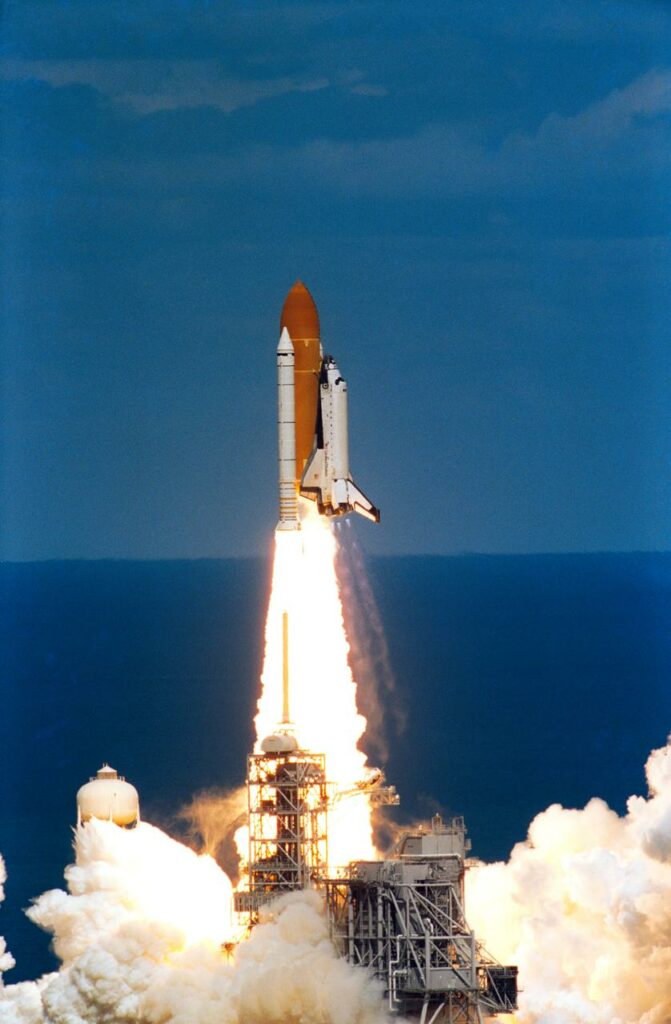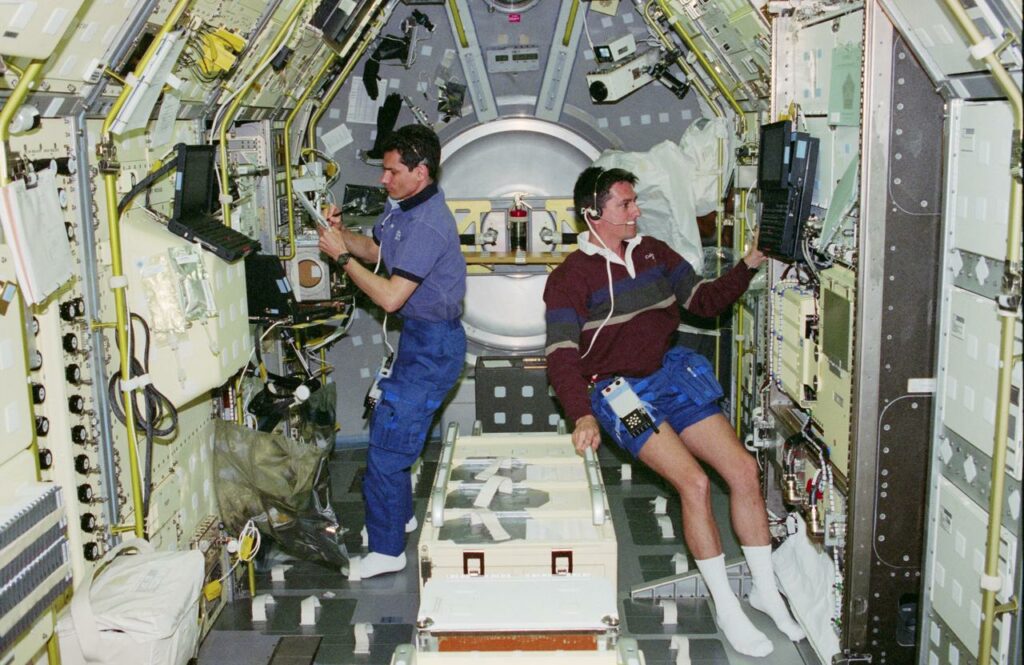
STS-83 launched on April 4, 1997, in the afternoon local time. It was originally scheduled to launch the previous day, but that attempt was scrubbed because of fuel cell problems, and they were determined to be in the normal range and cleared for flight. The fuel cells used liquid oxygen and liquid hydrogen to produce electrical power and drinking water for the crew. The significance of this will become apparent shortly.
As far as Space Shuttle missions, STS-83 was fairly unique. It had two female astronauts in its seven-member crew, Payload Commander Janice Voss and Pilot Susan Still, which hadn’t happened all that often even in 1997. Columbia would become the first American spacecraft to be commanded by a woman, Eileen Collins, who flew STS-93 in 1999. It was also unique because of its mission length. The average shuttle mission was at least a week, missions using Columbia or Endeavour tended to be longer because of their unique Extended Duration Orbiter capabilities.
STS-83 was planned for fifteen days in space. However, Columbia returned to Kennedy just under four days after launch, one of only three missions ever to do so. The other two early returns were because of problems with the fuel cells. However, the mission payload was so important that NASA left all of the equipment in Columbia and reflew the mission later in the year as STS-94. No, there weren’t eleven flights between the two missions – the shuttle missions were planned out years in advance, so the mission numbers were not always in chronological order.
STS-83 reached orbit without any problems, but shortly thereafter fuel cell number two started to have voltage issues. According to NASA: There are three fuel cells on each orbiter, each containing three substacks made up of two banks of 16 cells.
For safety reasons any fuel cell which had an increase in voltage above a certain level had to be shut down, else it could have pulled even more voltage to it from the other cells and caused a fire. Shutting down one of the fuel cells triggered one of the flight rules that required all three fuel cells to be functioning for landing. This was because they provided electrical power for the Orbiter’s flight surfaces and engines. Fuel Cell 2 continued to have problems and was shut down for the rest of the mission on April 6, 1997, setting Columbia up for an early return.
The loss of one-third of its electrical power and more than three-quarters of its mission duration, however, didn’t mean that nothing was accomplished on Columbia during the abbreviated mission. Only one of the two experiments on the EXPRESS rack was done, but other experiments were completed successfully. These were contained in four other areas: two furnaces, a combustion box, and a glovebox.

The furnace experiments included an experiment aimed at determining how far molten metals could be cooled before they solidified and another where solid metal was mixed with the molten metal of a different type to determine how the two bonded, without the whole combination melting again. Other experiments, in the glovebox, included three protein crystal experiments and a plant experiment. The plant experiments even used a computer running Debian Linux, which was brand new in 1997.
STS-83 landed back at the Kennedy Space Center on April 8, 1997, after just three days, 23 hours, and thirteen minutes in space. As I mentioned, the entire mission was reflown as STS-94. It would become the first time more than two of the same crew flew into space together a second time, as all seven crew members from STS-83 also flew on STS-94.
So what was so important that Shuttle program managers left everything in the orbiter and flew the same mission with the same crew just three months later? The Microgravity Science Laboratory.
The Microgravity Science Laboratory was one of the first missions to prove the technology for the International Space Station (ISS), the first module of which would be launched in the following year. Installed in the Spacelab double module was the new EXPRESS rack, which would be used to host experiments on the International Space Station. It was even fitted to the Spacelab in the same way that it would be fitted to the ISS. Two of the nineteen experiments on STS-83 were installed in this rack, with the others in the remaining space of the module and in the shuttle proper. As usual, the astronauts carried the SAREX radio, as three crew members were amateur radio operators.
The astronauts also conducted experiments on flames, particularly how balls of flame form in microgravity and how they stick around, but not all of the planned data was taken because of the fuel cell problem.
More Information
STS-83 Space Shuttle Mission Report (NASA via Scribd)
STS-83 mission page (NASA)




 Join the Crew!
Join the Crew!
 Escape Velocity Space News
Escape Velocity Space News
0 Comments